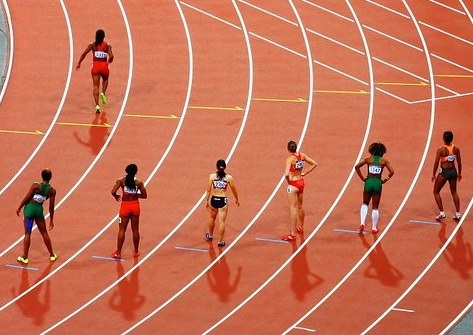 When it comes to matters of the heart, not all athletes are equal.
When it comes to matters of the heart, not all athletes are equal.
After years of dedicated training, runners’ hearts may function more efficiently than those of other athletes, according to a new University of Guelph study.
Prof. Jamie Burr, Department of Human Health and Nutritional Sciences, compared resting heart function in elite runners and swimmers to learn more about how the body may adapt to different types of exercise.
Published in the journal Frontiers in Physiology, the study compared 16 elite swimmers and 16 elite runners. Most participants were white males, and all athletes were competing at the Olympic or international level. Athletes were matched based on age, race and sex, and were asked to fast for two hours and refrain from exercise for 12 hours before testing.
Previous research has shown differences in heart adaptations between athletes and non-athletes, particularly in the left ventricle where most cardiac work takes place, said Burr. But no one had paired top runners with top swimmers.
“It’s an important comparison because one sport is done upright, causing the heart to work against gravity to pump blood through the body,” said Burr. “The other is done while the body is lying down and immersed in water, so the blood can return to the heart more easily.”
The two sports also involve drastically different movements with different parts of the body, he added.
“Swimming requires a lot of upper body strength, which can impact the heart having a lot of muscle tissue around the ribcage. You are also holding your breath, which can affect the pressure put on the heart.”

Results showed the structure of the left ventricle was similar between the two types of athlete
“This is important because until recently it was believed that exercises with more of a strength component, such as swimming, would cause the heart walls to grow thicker but we confirmed it didn’t,” said Burr.
The research, which highlights how athletes’ hearts adapt differently depending on their sport was featured in The New York Times.
The study did find differences in heart function between the two groups. Runners were able to fill their hearts quicker than swimmers. This “early diastolic filling” allows blood to refill the heart more rapidly.
Running may provide a greater physiological stimulus, causing the heart to adapt by becoming more efficient, he said.
“Runners are always upright, so they have to be better at getting blood back to the heart, whereas swimmers are in a position to have more help refilling the heart.”
Runners also had lower resting heart rates than swimmers despite the fact that swimmers can often log more training hours, said Burr.
“The fact that runners have a lower resting heart rate is likely connected to their hearts’ enhanced ability to refill, and possibly blood volume. These findings support the concept of sport-specific differences in left ventricle function.”
He said the next step is to study differences in heart function over the course of training to see what adaptations occur. This research will help us understand the impacts of difference exercise on heart development, he said.
“Eventually we may be able to determine the optimal cardiovascular stress for someone wants to build a healthier, stronger heart in a specific way, and one method of exercise training may be preferable to another. If someone has cardiovascular disease, perhaps they should do an exercise that is less demanding on the heart or causes it to adapt in a different way. That said, right now our understanding is that almost all exercise is good- and for the most part, more is better.”
Contact:
Prof. Jamie Burr
burrj@uoguelph.ca